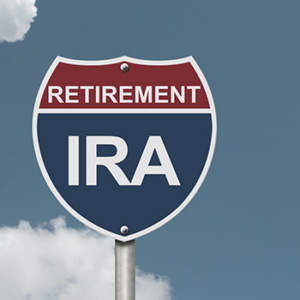 Gone are the days of starting a job out of college and working with the same company until you retire with a gold Rolex. Most people now will work for multiple companies over their careers and have a few side businesses along the way. According to the Bureau of Labor Statistics, the number of jobs held by people born between 1957 – 1964 was 12.6 for men and 12.4 for women. This data leads to a trail of old 401(k) retirement accounts, which you probably have no idea what to do with. Don’t fret; you are not alone.
Gone are the days of starting a job out of college and working with the same company until you retire with a gold Rolex. Most people now will work for multiple companies over their careers and have a few side businesses along the way. According to the Bureau of Labor Statistics, the number of jobs held by people born between 1957 – 1964 was 12.6 for men and 12.4 for women. This data leads to a trail of old 401(k) retirement accounts, which you probably have no idea what to do with. Don’t fret; you are not alone.
As a Certified Financial Planner™, I am regularly asked about 401(k) rollovers and how to consolidate old retirement accounts. People want to know what’s best for their financial situation. If you’ve been contributing to a 401(k) or 403(b) retirement account, you have a few options for handling it. So it’s crucial to weigh the potential pros and cons of each.
 Roll your assets into an IRA
Roll your assets into an IRA
Keep your retirement savings invested by rolling the money into an individual retirement account (IRA.) The money remains invested and has tax-deferred growth potential, avoiding any taxation during the rollover, and you can continue adding to it. With more than one old retirement plan, you can consolidate them all into the same IRA. With an IRA here with me, you will have access to investments that are typically well beyond those offered in the employer-sponsored plan, and you won’t be subject to the plan’s rules or restrictions, however please keep in mind that IRA’s do have there own set of guidelines and fees. Be aware that if you cash out before opening the IRA, you can trigger income tax penalties. You have to get the funds into the new IRA within 60 days.
Transfer your account to your new employer’s plan
Assuming your new employer will accept incoming transfers (Some don’t.) You can roll the money into your new employer’s new retirement plan account. The fewer retirement accounts you have to keep track of, the easier your financial life will be. Check with the new employer but also check on the fees and investment choices you will have.(protection from creditors, potential loan options and RMD withdrawals do not apply if you are still working with the company at RMD age.)
 Leave it in your current plan
Leave it in your current plan
You could take no action at all. Your money will continue to remain invested and tax-deferred, and you will avoid possible withdrawal taxation. The downside of this is you can’t make additional contributions to this account if you are no longer an employee, per plan guidelines there still may be partial withdrawal options which can be beneficial if you left the company in the year that you turned age 55 as penalty taxes would not be applicable although standard taxes would apply. Plan restrictions and rules still apply. Usually, if your funds are below $1,000, they will have the option to cash out your account and send you a check automatically.
Cash-out your savings
Simply put, you can take the cash and walk. It can provide money needed for immediate expenses. But I’d take caution and ask you to please consult with your financial advisor. You would be missing out on so much more. You would miss out on the long-term potential for tax-deferred growth. Taking the money will undoubtedly trigger tax penalties. The withdrawal will be fully taxable and subject to additional early withdrawal penalties (10% if under the age of 59 1/2 or possibly under age 55, depending on when you left the company.)
Always consult your tax advisor or financial professional about specific rules regarding retirement accounts and rollovers to find the options that are best for you and your specific circumstances.
August 2022
The opinions voiced in this material are for general information only and are not intended to provide specific advice or recommendations for any individual.

 Roll your assets into an IRA
Roll your assets into an IRA Leave it in your current plan
Leave it in your current plan


